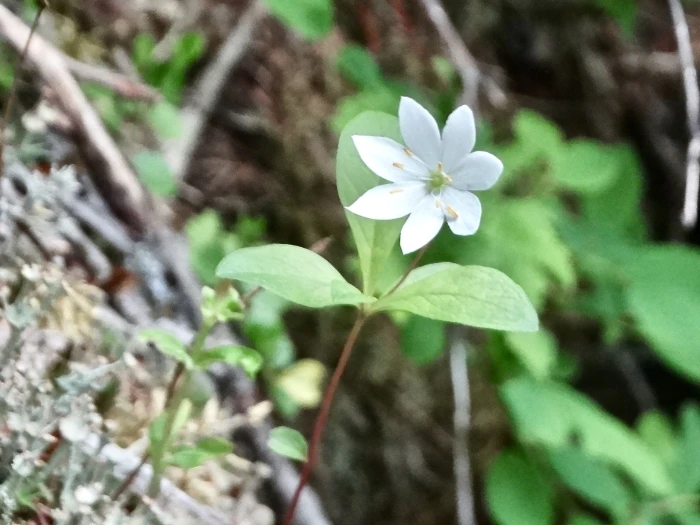Chickweed-Wintergreen
(Lysimachia europaea)
Chickweed-Wintergreen (Lysimachia europaea)
/
/

Cheryl McCleary-Catalano
CC BY 4.0
Image By:
Cheryl McCleary-Catalano
Recorded By:
Copyright:
CC BY 4.0
Copyright Notice:
Photo by: Cheryl McCleary-Catalano | License Type: CC BY 4.0 | License URL: http://creativecommons.org/licenses/by/4.0/ | Rights Holder: Cheryl McCleary-Catalano | Publisher: iNaturalist | Date Created: 2017-06-11T13:07:20-07:00 |
























Estimated Native Range
Climate Requirements for Seongnam-si, Korea, Republic Of
| This Plant | Your Site | Plant Suitability for Your Location | ||
|---|---|---|---|---|
| • Precipitation | 7" - 176" | 52" | Aquatic | Aquatic |
| • High Temp. | 33°F - 90°F | 84°F | Your summer temperatures are normal for this plant. | Excellent |
| • Low Temp. | -52°F - 62°F | 18°F | Your winter temperatures are normal for this plant | Excellent |
This plant may not grow well at your location - your precipitation is too high.
Summary
Lysimachia europaea, commonly known as chickweed-wintergreen or arctic starflower, is a small herbaceous perennial native to coniferous and mixed forests, as well as boggy and marshy areas across northern Europe, Asia and western North America. It typically grows to about 4 inches tall and features whorls of pale green leaves that turn copper in late summer. The plant produces small, star-shaped white flowers with yellow centers in late spring to early summer, which are modest in appearance but add a delicate charm to woodland settings.
Chickweed-wintergreen is valued for its ability to thrive in shady, moist conditions, making it suitable for woodland gardens, shaded borders, and naturalized areas. It prefers consistently moist, humus-rich soils and can tolerate a range of light conditions from full shade to partial sunlight. While it is not known for aggressive growth, it can spread in favorable conditions and may become invasive outside its native range. Gardeners should be aware of its potential invasiveness and check local regulations before planting.CC BY-SA 4.0
Chickweed-wintergreen is valued for its ability to thrive in shady, moist conditions, making it suitable for woodland gardens, shaded borders, and naturalized areas. It prefers consistently moist, humus-rich soils and can tolerate a range of light conditions from full shade to partial sunlight. While it is not known for aggressive growth, it can spread in favorable conditions and may become invasive outside its native range. Gardeners should be aware of its potential invasiveness and check local regulations before planting.CC BY-SA 4.0
Plant Description
- Plant Type:
- Height: 1-3 feet
- Width: 0.5-1 feet
- Growth Rate: Moderate
- Flower Color: White
- Flowering Season: Summer
- Leaf Retention: Semi-deciduous
Growth Requirements
- Sun: Full Sun, Part Shade
- Water: High
- Drainage: Medium, Slow
Common Uses
Border Plant, Butterfly Garden, Low Maintenance, Water Garden
Natural Habitat
Coniferous and mixed forests, boggy and marshy areas across northern Europe, Asia and western North America
Other Names
Common Names: Yellow Loosestrife , Arctic Starflower , Yellow Pimpernel
Scientific Names: Lysimachia europaea , Alsinanthemum europaeum , Lysimachia trientalis , Lysimachia trientalis var. arctica , Trientalis aleutica , Trientalis alsiniflora , Trientalis arctica , Trientalis arctica , Trientalis europaea , Trientalis europaea f. erubescens
GBIF Accepted Name: Lysimachia europaea